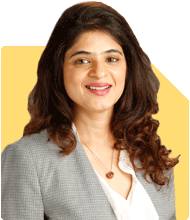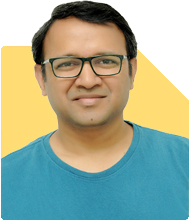Ashwini Dasgupta | Answer |Ask -Follow
Personality Development Expert, Career Coach - Answered on Feb 06, 2024
She has 15 years of experience training corporate professionals and has worked at Amazon, JP Morgan, Nomura and Satyam among others.
As a career coach, Ashwini specialises in helping growth-minded IT corporate managers develop their self-worth and create the right mindset so that they can achieve their career goals.
Besides corporate training, she offers personal consultations as well.
Ashwini holds a master’s degree in human resources from the Narsee Monjee Institute of Management Studies, Mumbai, and is a certified NLP trainer from the National Federation of NeuroLinguistic Programming, USA.
She has completed her soft skills training and image consultancy course from the Image Consulting Business Institute, Mumbai
Ashwini is also a PoSH trainer, certified by the Society for Human Resource Management.... more

Hey ashwiki , i 25 year old with total 1 yr of experience. I did btech got job but as salary wasn't much , family suggested to go for mba . Did mba from tier-3 college now all i getting a sales job of 10-15k. Took one year gap to learn data analysis developed few real time peojects still not getting shortlisted. What to do i am damn confused and depressed please reply fast
Sorry for the delay in reply
Few aspects you may look at -
Self Reflection-do a swot analysis on your skills. This will help you identify your strengths and what you are passionate about and if it aligns to your career goals
Networking
Optimize Linkedin platform. Join groups, connect with people.
Mention on your linkedin profile- open for jobs
Visit websites like glassdoor which will help you give insights on various organizations salary bands and culture. This can be a reference point to start your job hunt.
Mean time keep enhancing your skills
Take up freelancing work/ contract work
Shortlist companies you want to work with. Rework on your job search strategy
Seek help of recruitment agencies they are connected with almost every organization
Prepare on interviews so you can give your best
Attend job fair and events
Reach to HR's on linkedin
Hope this helps
Thanks
Ashwini Dasgupta
Author of Confidence Decoded. Is it a Skill or Attitude
You may like to see similar questions and answers below
Patrick Dsouza |1428 Answers |Ask -Follow
CAT, XAT, CMAT, CET Expert - Answered on May 07, 2024
Patrick Dsouza |1428 Answers |Ask -Follow
CAT, XAT, CMAT, CET Expert - Answered on May 06, 2024
Patrick Dsouza |1428 Answers |Ask -Follow
CAT, XAT, CMAT, CET Expert - Answered on May 14, 2025
Patrick Dsouza |1428 Answers |Ask -Follow
CAT, XAT, CMAT, CET Expert - Answered on Jul 31, 2025
Dr Dipankar Dutta |1836 Answers |Ask -Follow
Tech Careers and Skill Development Expert - Answered on Dec 05, 2025
Ulhas Joshi |280 Answers |Ask -Follow
Mutual Fund Expert - Answered on Dec 05, 2025
Dr Dipankar Dutta |1836 Answers |Ask -Follow
Tech Careers and Skill Development Expert - Answered on Dec 04, 2025
Ravi Mittal |676 Answers |Ask -Follow
Dating, Relationships Expert - Answered on Dec 04, 2025
Anu Krishna |1745 Answers |Ask -Follow
Relationships Expert, Mind Coach - Answered on Dec 04, 2025
Anu Krishna |1745 Answers |Ask -Follow
Relationships Expert, Mind Coach - Answered on Dec 04, 2025
Mayank Chandel |2562 Answers |Ask -Follow
IIT-JEE, NEET-UG, SAT, CLAT, CA, CS Exam Expert - Answered on Dec 04, 2025
Mayank Chandel |2562 Answers |Ask -Follow
IIT-JEE, NEET-UG, SAT, CLAT, CA, CS Exam Expert - Answered on Dec 04, 2025
Mayank Chandel |2562 Answers |Ask -Follow
IIT-JEE, NEET-UG, SAT, CLAT, CA, CS Exam Expert - Answered on Dec 04, 2025
Mayank Chandel |2562 Answers |Ask -Follow
IIT-JEE, NEET-UG, SAT, CLAT, CA, CS Exam Expert - Answered on Dec 04, 2025























